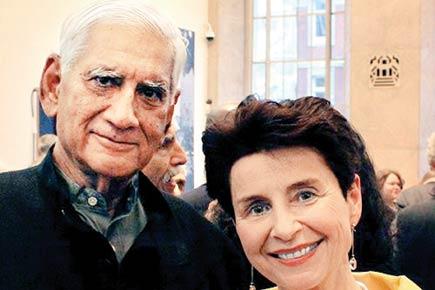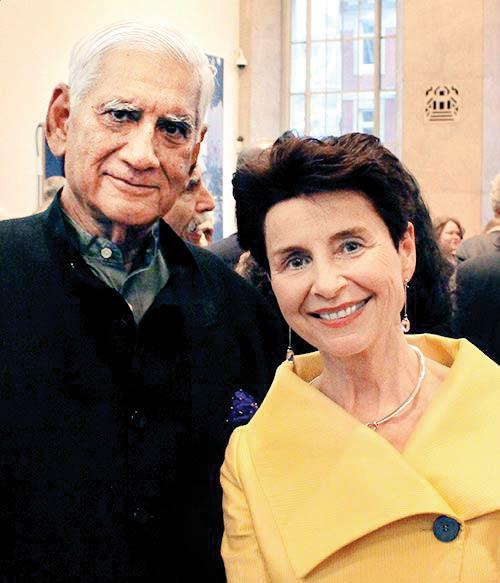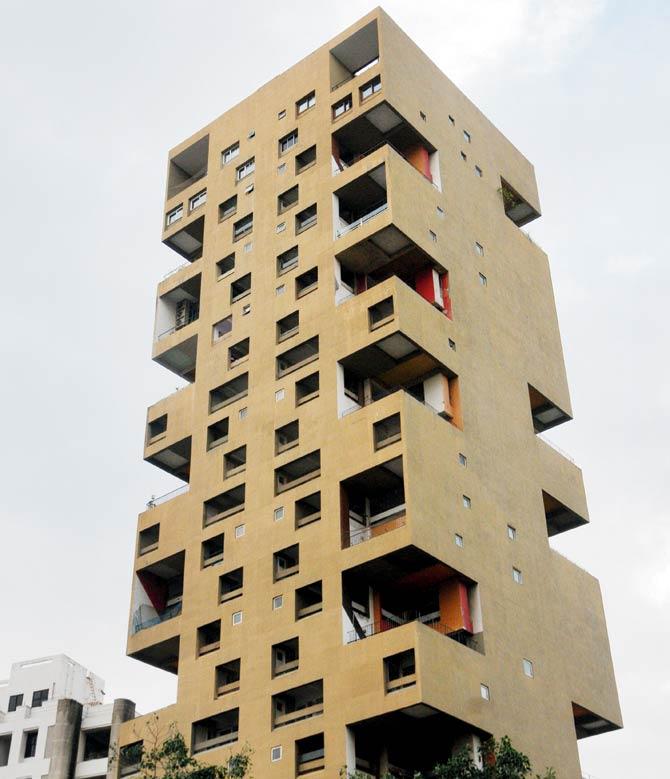Ahead of her lecture on late star architect Charles Correa, Dr Irena Murray recalls her interactions with one of the post-Independence India’s finest creative minds

From railway models to cosmic symbolism and Mumbai’s chaos, inspiration for late architect and Mumbai resident Charles Correa emerged from diverse and immersive subjects. “I found him to be forceful, intelligent and a very creative man,” recalls Dr Irena Murray, architectural historian and curator, of their first interaction.

Dr Irena Murray with Correa
ADVERTISEMENT
Correa was a guest at the Royal British Institute of British Architecture (RIBA), London, and exploring the possibility of displaying drawings of his work at the institute. Dr Murray curated the exhibition in 2013, and thus began their association. In an attempt to celebrate his body of work, both classic and modern, Dr Murray will deliver a lecture on March 15, titled, Before the Monsoon: the Architecture of Charles Correa at NGMA, presented by the British Council’s Arts Initiative. Edited excerpts from an interview.

The British Council in Delhi designed by Correa
Q. Charles Correa’s design transcends borders. What was the reason for this universality?
A. Even if a project was complex, his ideas were clear. He always kept the user in mind, whether he was creating a building for housing or work. He tried to introduce elements of tradition in his designs. It could a historical visual, a concept or cosmic symbolism. Correa made buildings that felt good to live and work in; they were straightforward, just like the way he spoke.

Kanchanjunga at Peddar Road built by Correa has interlocking apartments at different levels, thus reducing the footprint of flats. Open on three sides, the flats provided adequate cross ventilation and the verandah was proportioned to serve as an outdoor living space, observed architect Kamu Iyer in his book, Boombay: From Precincts to Sprawl
Q. He is called an architect and humanist. Why?
A. That he was a humanist predicated on the fact that he never lost sight of the people who would live in his buildings. While designing housing projects, he was aware that most people don’t live comfortable lives. There are tens of thousands who face difficulties in finding shelter. He emphasized this in his lectures, and in his buildings. He felt everybody was entitled not just to a roof but a space where one could breathe and function. His civic belief paid tribute to Mahatma Gandhi. Some of his teachings made Charles feel strongly about haves and have-nots.
Q. What did he tell you about Mumbai?
A. He spoke as an architect and urban planner. Many things troubled him in the 1960s and 70s. Bombay was flooded by people seeking work but later leaving due to housing problems. He studied the demographic patterns, how the population travelled in the north-south direction. He came up with the idea that the north-south axis could extend eastward to create a new city. Several other centres could be founded to unclog the city centre.
Q. Was he happy with what he saw happen in the city in his lifetime?
A. Yes and no. He established Navi Mumbai. Part of it, like Belapur’s housing projects, came to pass, though they were not realized to the scale he imagined. His vision of transforming Parel’s mills did not materialise despite a workable plan. He had a three-pronged idea for it: development, affordable housing, leisure and entertainment. It’s never too late to implement his plans. His sensitivity to the Indian climate is especially remarkable.
Q. What can the world learn from his legacy?
A. He never stopped listening, and reminding everyone around that as a society we have an obligation to those who are less privileged, and that we must contribute to towards this segment. Dr Murray will speak at the NGMA, Mahatma Gandhi Road, on March 15, 6.30 pm onwards. The talk is free and open to all
 Subscribe today by clicking the link and stay updated with the latest news!" Click here!
Subscribe today by clicking the link and stay updated with the latest news!" Click here!







